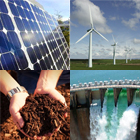What are Microgrids?
A microgrid is essentially a ‘normal’ transmission and distribution grid, just on a significantly smaller scale. Microgrids are often implemented in the most rural locations.
Compared with standard grid system the amount of generation will be significantly less as the demand will be significantly less. With less generation the integration of renewable sources of energy is more challenging. Microgrids are less resilient when it is not possible to generate electricity from the renewable source of energy. The case of the Fair Isle gives a good way of managing this while still maintain electricity supply security.
Microgirds often only have one generation source, if this source is to fail, the people served by the microgrid will be without electricity until this can be fixed.
Further issues that present with single generator systems compared with national grid systems is the difficult to manage frequency and voltage control, reducing the amount of control there is on the system. Also, the capacity of the generator cannot be immediately increased with demand, therefore the demand at any one point is limited by the amount of generation there is, and at times where there is little electricity demand there may be a need to ‘dump’ electricity, which is a waste.
Transmission
A microgrid has no transmission system, as the electricity is generated essentially at the point of demand there is no need to transport electricity at very high voltages over long distances. This reduced the amount of expensive high voltage equipment that a system will require.
Distribution
In a microgrid this is where all the transportation from generation to the consumer occurs, this may be a relatively simple system in comparison to large regional distribution networks.
Microgrids can be particularly challenging as the load factors are very small (particularly in developing countries) and therefore control of the system may be difficult.




